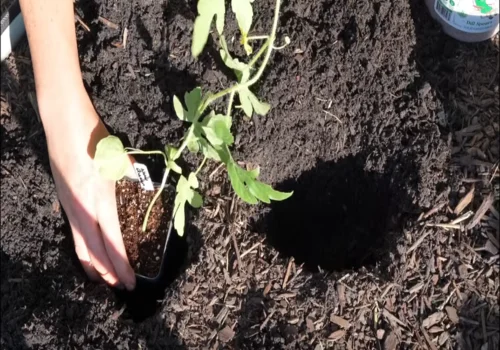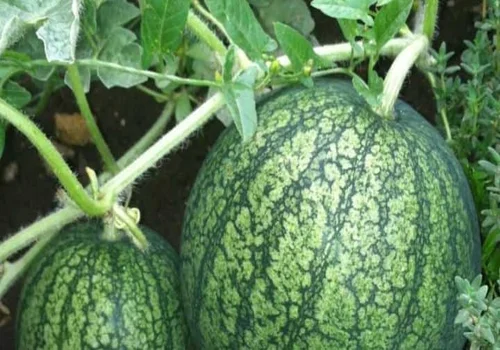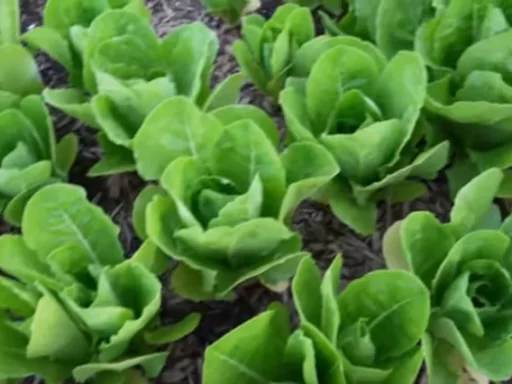As the warm weather arrives in the southeastern coast of North Carolina, it’s time for melon season! Growing watermelons can be a challenge, but with the right guidance and knowledge, you can produce amazing results. In this article, we’ll explore five essential tips to grow the best watermelons, especially for gardeners who are new to cultivating this delightful summer fruit.
Tip 1: Choosing the Right Watermelon Variety
The first step in growing successful watermelons is selecting a variety suitable for your experience level and available space. Watermelons come in various sizes, from small, individual servings to massive fruits weighing over 50 pounds. The larger the watermelon, the more time, space, and skill are required to cultivate it successfully. If you’re new to watermelon gardening, it’s best to start small. Varieties like the Sugar Baby watermelon are ideal for beginners since they typically weigh between 8-10 pounds and take less time to mature. By choosing smaller varieties, you’ll have a higher chance of success, as these melons require less space and are easier to maintain, especially when it comes to managing pests and diseases.
Tip 2: Minimizing Plant Stress with Shade

One crucial tip, especially for those living in southern climates, is minimizing plant stress by planting your watermelon bed in a partially shaded area. Although watermelons need a long growing season with plenty of warm weather, excessive heat can stress the plants. In their natural environment, watermelon vines are understory plants, meaning they naturally thrive in partial shade. To mimic these conditions, plant the main watermelon bed in the shade and allow the vines to extend out into the sun. This method ensures that the plant’s core remains cool, reducing stress while the vines still receive the sunlight necessary for fruit development.
By positioning the main root structure in shaded, cooler soil and letting the vines meander into sunny areas, you’ll give your plants the best of both worlds. This approach is particularly helpful in hot southern climates like Texas, Florida, and Southern California, where excessive heat can overwhelm watermelon vines.
Tip 3: Fertilize Generously
Watermelons are known to be heavy feeders. To ensure healthy vines and large fruits, proper fertilization is key. Watermelons demand an abundance of nutrients, making regular feeding an essential part of their care. It’s recommended to follow a two-step fertilization routine consisting of both granular and water-soluble fertilizers. Granular fertilizers should be applied every 10 to 14 days. A good blend consists of organic all-purpose fertilizer, bone meal for phosphorus and calcium, and, optionally, crab and lobster shell meal to ward off root-knot nematodes.
In addition to the granular fertilizer, supplement your plants with water-soluble fertilizers like Alaska Fish Fertilizer. This liquid feed helps provide essential nutrients for rapid growth, especially in dense planting conditions where soil nutrients might be depleted quickly.
Tip 4: Proper Watering
Watermelons require consistent watering throughout the growing season to thrive. Deep watering ensures the root system stays hydrated, but be mindful not to overwater as this can lead to issues like root rot. The key is to maintain moist, well-drained soil while avoiding waterlogged conditions. Mulching around the base of the plant helps retain soil moisture and keep the roots cool.
Tip 5: Allow Room for Growth
Watermelons are vining plants, so they need plenty of room to spread. For each watermelon plant, allocate about two square feet of growing space. If planting in raised beds, space your plants at least one foot apart. This allows the vines to grow freely, minimizing competition for sunlight and nutrients. The more room your watermelons have to sprawl, the healthier and more productive they will be.
Frequently Asked Questions
1. How long does it take for watermelons to grow? Watermelon plants usually take around 80 to 100 days from planting to harvest, depending on the variety and growing conditions.
2. What is the best time to plant watermelons? Watermelons should be planted after the last frost in spring when the soil temperature is consistently warm, around 70°F (21°C).
3. How much sun do watermelons need? Watermelons need full sun to thrive, requiring at least 8 hours of direct sunlight each day for optimal growth.
4. Can I grow watermelons in containers? Yes, smaller watermelon varieties like Sugar Baby can be grown in large containers. Ensure the container is at least 18 inches deep to accommodate the root system.
5. How often should I water my watermelon plants? Watermelons need deep watering about once a week, but this can vary depending on weather conditions. Ensure the soil stays moist but not waterlogged.
6. What pests affect watermelon plants? Common pests include aphids, cucumber beetles, and spider mites. Regular inspection and using organic pest control methods can help manage these pests.
7. When is a watermelon ripe and ready for harvest? A watermelon is ripe when the underside (where it touches the ground) turns from white to yellow, and the tendril closest to the fruit dries up.




